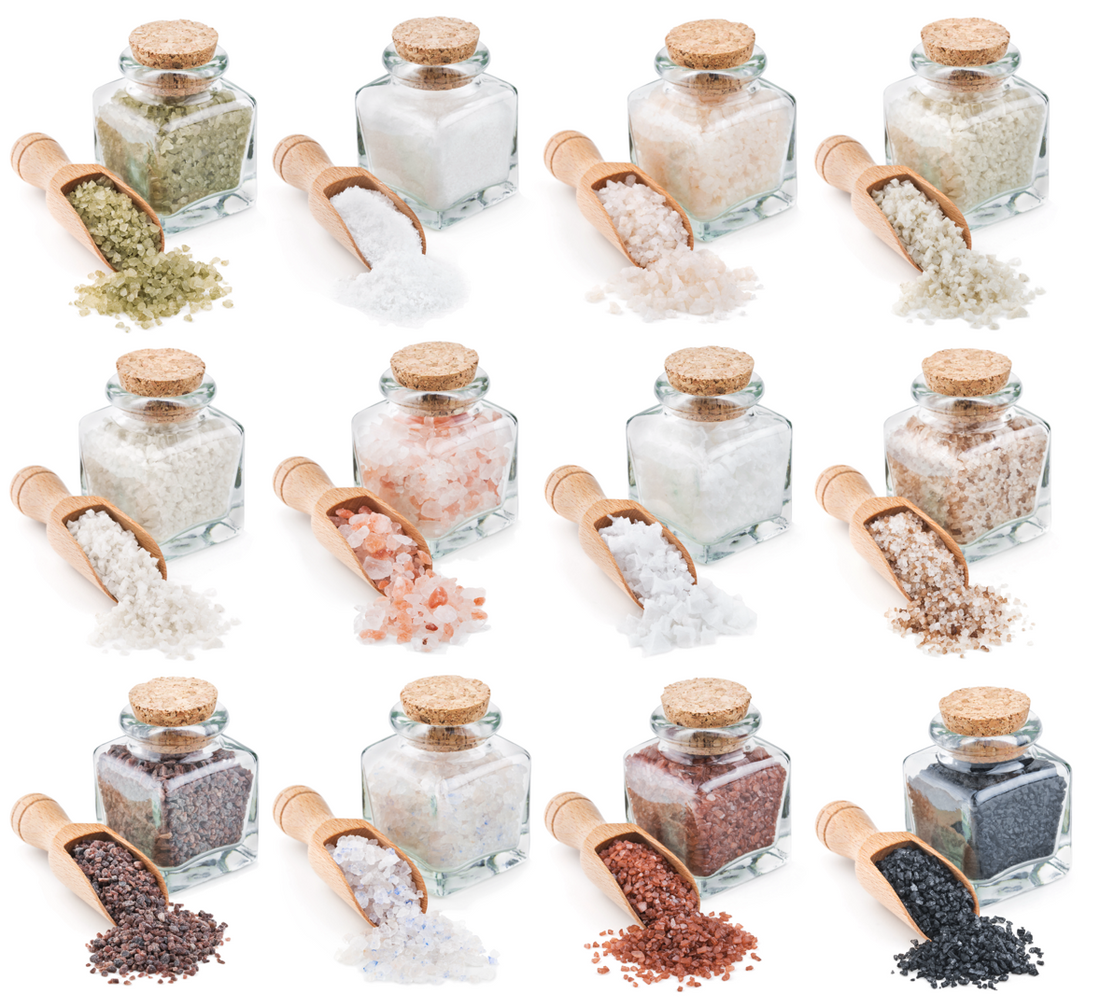Let's talk about salt baby! Let's talk about you & me! Let's talk about all the good things....
Gimme an S, gimme an A, gimme an L, and a T – SALT! 🧂
This tiny word has the power to elevate every meal. It enhances EVERYTHING. I'm not kidding; it truly enhances EVERYTHING.
A juicy steak? Enhanced!
A perfectly baked potato? Enhanced!
Even a simple cupcake, like these Salted Chocolate Stout Cupcakes? Yup, ENHANCED!
Salt is a culinary superhero often misunderstood. What's crazy is that it's not just a flavor enhancer; it's a fundamental component of life itself! I've often been asked, especially as a caterer and private chef, to prepare low-sodium meals. However, please note that I'm neither a nutritionist nor a doctor. My insights here are purely from a culinary perspective. Let's dive into this tiny but mighty ingredient that's central to all our culinary creations at Tasty Tin.
The Heart of Tasty Tin
Just as salt is essential for life, it's essential in every dish that emerges from Tasty Tin's kitchen. It's a vital ingredient in every blend we craft. In fact, we're such big fans of salt that we even prefer using salted butter in our recipes. But what's crucial to understand is the incredible diversity of salts available and how to wield their powers effectively. Today, we're going to explore four types – just the ones I keep in stock. Please remember, that doesn't mean I only have four; these are simply the ones we'll discuss today. Now, at its core, salt is salt, scientifically known as sodium chloride. So, theoretically, with the right mathematical equation, they're all interchangeable. But let's be real, each type has its own unique qualities and flavors. Buckle up as we navigate the intriguing world of salts!
1. Regular Iodized Salt
First, we have regular iodized salt – the one you've likely used your whole life. Sometimes it's simply referred to as table salt, you know, the iconic one with the girl in a yellow rain jacket on the packaging? The great thing about this salt? It's cost-effective and readily available. It's what most people are familiar with and use. But today, let's open our hearts and minds to the wonders of other salts!!!!
2. Diamond Crystal Pure & Natural Kosher Salt
Second, we have my everyday go-to salt, Diamond Crystal Pure & Natural Kosher Salt. This salt is a permanent fixture in my kitchen and even travels with me! You'll find it in all my salt shakers and right next to my stove in the salt mill. What sets it apart? The grind is coarser than regular table salt, which is typically ground fine. Whenever you explore my recipes, you'll notice that salt is often listed as an ingredient, either for seasoning before or during cooking. And here's the scoop: 99% of the time, it's kosher salt. But, and it's a friendly heads-up, because of its larger grind and unique brand, it's not an exact 1-to-1 substitution for other salts. So, keep that in mind – using a different salt might lead to over-salting or under-salting your dish.
3. Sea Salt
Third, we have sea salt. I prefer a very coarse ground sea salt, mainly used to season water or large pots of liquid to taste like the sea. Imagine boiling lobsters or pasta with a dash of this handy sea salt. It's the murkiest of the salts I use, retaining a hint of moisture, much like the ocean itself. 🌊💧
Lastly, we have flakey sea salt, my personal favorite as a finishing salt. These delicate flakes are a true wonder. Imagine artisans delicately crafting them from salt blocks. That's flakey sea salt for you! It's meant to shine right before you serve a dish. I've even seen cookies adorned with flaky sea salt – a trend I may not fully grasp, but I can certainly appreciate the magic it adds to dishes like steak, salmon, potatoes, or virtually anything else just before that blissful bite. My go-to brand for this indulgence is Maldon Sea Salt flakes. Their distinctive shape ensures they're easily visible atop dishes, promising an explosion of saltiness on your taste buds. But it's not just about flavor; it's also about texture. When you sink your teeth into a flake, you'll hear that satisfying crunch. Pure culinary joy! I use this on my Slow Roasted Salmon with Fennel and Citrus.
Beyond the Top 4 Salts
These are what I consider the top four salts to know about, but don't think they're the only way to add salt to a meal. Your pantry and fridge likely hold everyday heroes that contribute to the overall saltiness of your dishes. Think about staples like soy sauce, olives, and capers – they're all salt contributors in their own right. As you experiment in the kitchen, remember to exercise caution when incorporating these salty elements. And let's not forget that seemingly vague yet profoundly important culinary directive – 'salt to taste.' It's an art form worth mastering on your flavorful journey. And stay tuned, because we have something that might help clear that up a bit…
Stay hungry!


